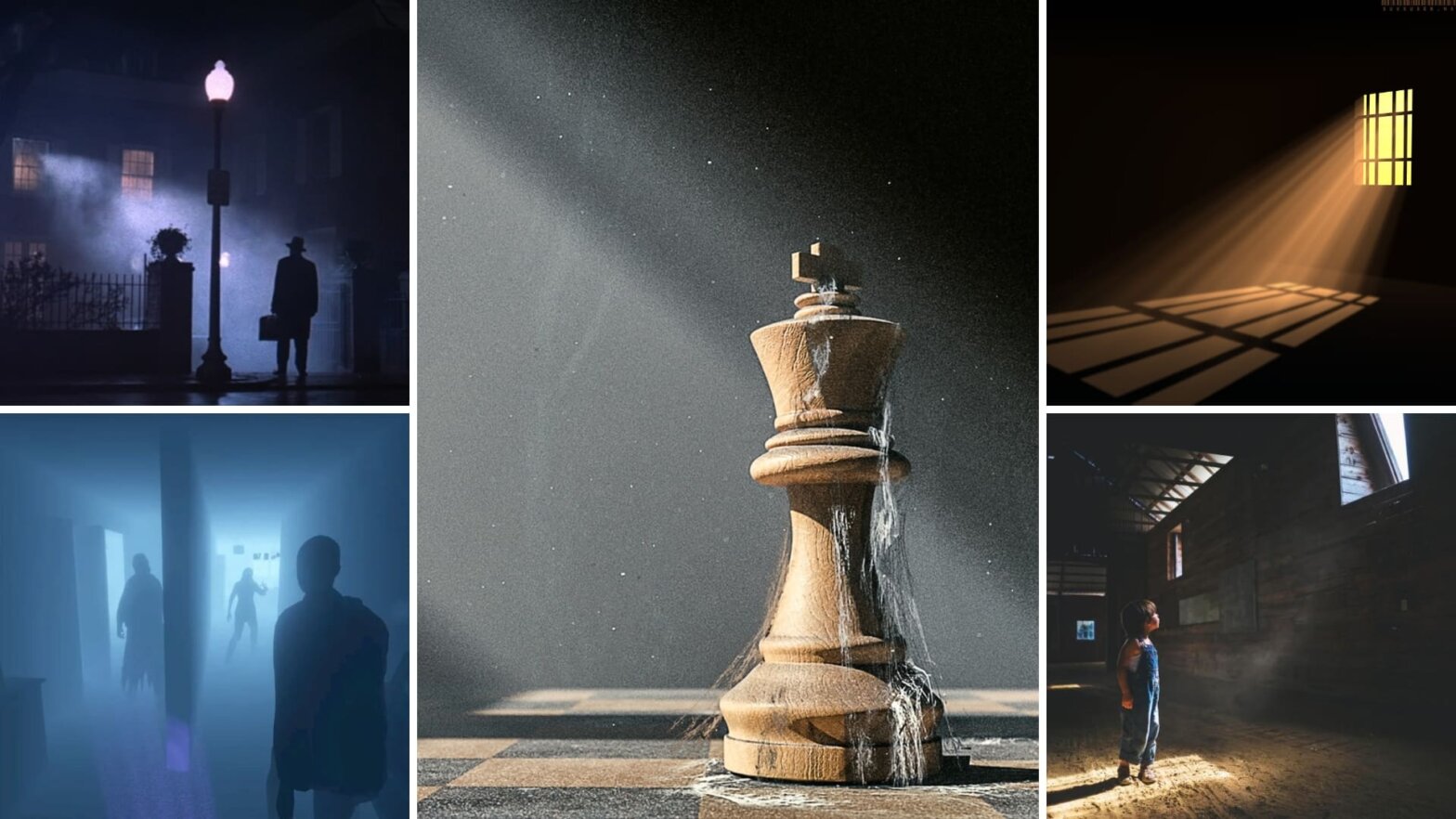What defines a cinematic shot? For many of us, it is the result of masterful cinematography that creates depth, tone, and tells a story through lighting and camera work. One lighting technique that can help achieve all of these things is volumetric lighting. What is volumetric lighting in filmmaking? Odds are, you have seen this lighting in some of your favorite films. Cinematographers and photographers alike love the captivating effect it has. Let’s take a look at volumetric lighting in cinema and how you can achieve it in your own projects.
What is volumetric lighting in film?
First, let’s define volumetric lighting
Volumetric lighting sounds a bit complicated, but I assure you it is rather simple. Before we take a look at some examples and effects, let’s define volumetric lighting in film.
VOLUMETRIC LIGHTING DEFINITION
What is volumetric lighting?
Volumetric lighting is a term used to describe the effect light can have by taking on a cone or beam shape and enhancing the sense of volume in a specific space. More simply, this lighting is the appearance of beams of light in which the space between a light source and its destination is also illuminated. Volumetric lighting is used to create “god rays” or beams of light by shining light through atmospheric mediums like fog or haze.
What is volumetric lighting used for?
- Adding depth
- Directing the audience’s eye
- Tone and aesthetic
What is volumetric lighting used for?
Benefits of volumetric lighting
Volumetric lighting is an effective cinematic lighting technique that has various effects. Through this lighting, we actually see the beam of light emitting from a source toward another area of the frame. Here are a few benefits of this effect.
Creating depth
This lighting technique accentuates three dimensional space. When used in a shot, it can add tremendous amounts of depth further engaging an audience. Roger Deakins, one of the best cinematographers in the industry, uses volumetric lighting in this shot from Skyfall (2012) adds dimension and depth to the frame.
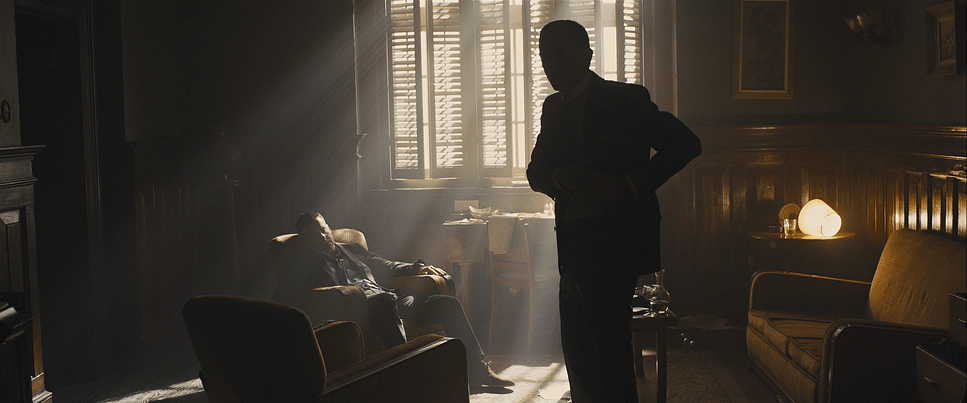
Skyfall example
As you can see from the still above, volumetric lighting can create more depth when the source is directed toward the camera or away rather than side to side of the frame.
Directing the eye
The very focused trajectory of volumetric lighting makes it an effective tool at directing the audience’s eye. Similarly to a spotlight, specific details or subject can be illuminated by the rays of light with this lighting.
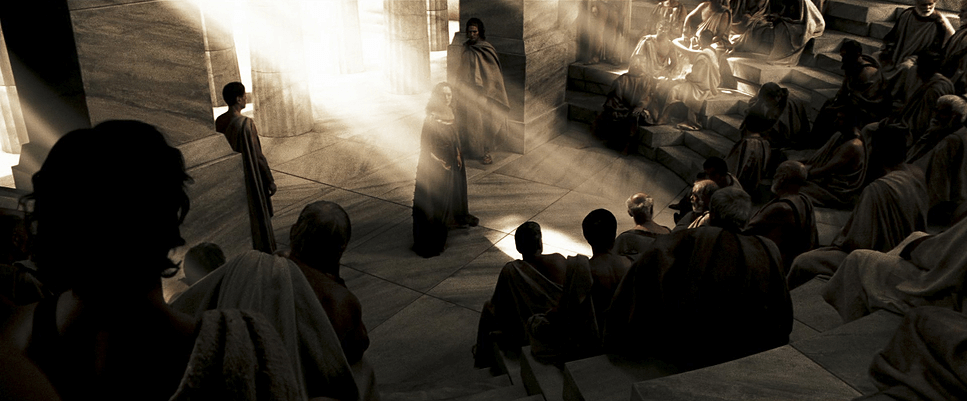
300 example
Tone and aesthetic
Volumetric lighting contributes both exposure and texture to a frame. For this reason, it can also be used to establish a film’s tone or aesthetic. In black and white films, this lighting complements the deep contrast and mysterious tones like in this shot from one of Orson Welles’ best films — Citizen Kane (1941).
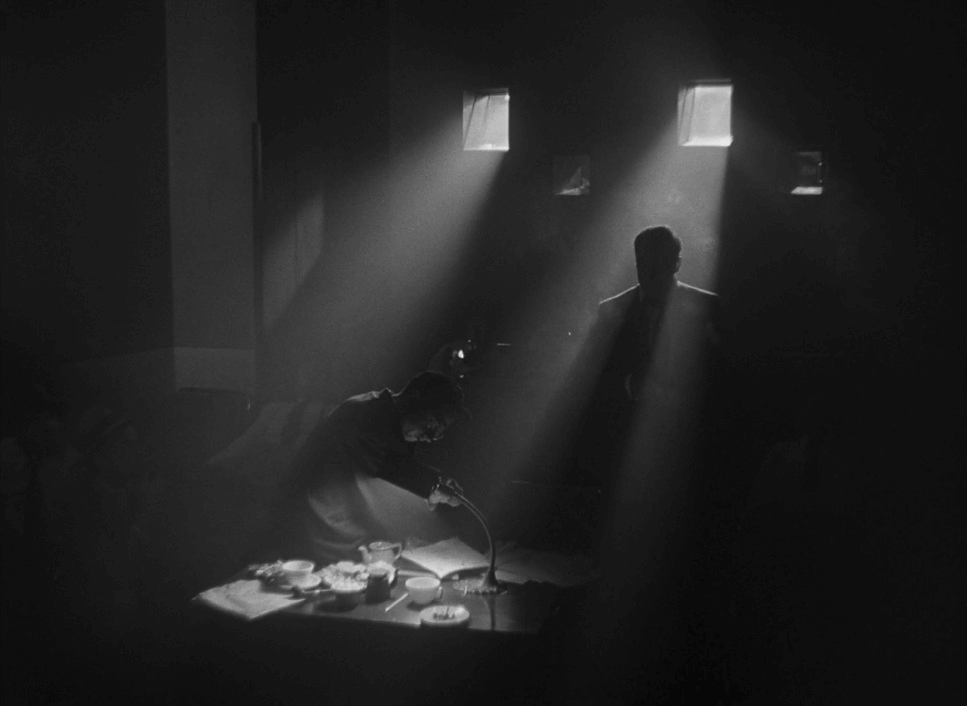
Citizen Kane example
However, this lighting does not always have to be used for harsh lighting and shadows. Many cinematographers use it for the painterly effect and quality it creates in a shot.
Cinematographer Colin Watkinson used this effect when shooting The Handmaid’s Tale. Check out his interview and breakdown of how he created the painting-like aesthetic of the hit television series.
Why The Handmaid’s Tale Looks like a Painting
As you can see, volumetric lighting can be used in various genres for cinematic effect. While the result may seem difficult to achieve, it can be quite simple.
What is volumetric lighting made from?
How to create volumetric lighting
Realistically, there are only three components that go into creating volumetric lighting: your light source, atmosphere, and how you shape the light. Let’s take a look at how to achieve all three.
Light source
To achieve this lighting, it is essential to have an intense, hard, single source light. This means that multi-source LED panels won’t cut it.
Natural light from the sun can sometimes work if you see that it is already producing this lighting, but this light source will move quickly over time.
Our suggestion is to use strong lights like the ARRI 1K or 2K fresnel or the ARRISun HMI. Check out how the team over at PremiumBeat used the ARRISun HMI Light to create volumetric lighting in the video below.
What is Volumetric Lighting Tutorial • Filmmaking Tips
As they mentioned in the video, it’s important to make sure that the light you use also has a narrow beam angle so that the light beam can travel as far as possible. Once you have the right light, back it up as far as possible for a more distinct shape.
Atmosphere
Atmosphere is critical to achieving the distinguished beam shape. Fog can work to achieve this. But using haze from artificial haze machines is best because the haze will hang in the air longer.
This video by Aputure breaks down the importance of atmosphere in this lighting technique and how you can use even smoke, dust, or dirt if you don’t haze to achieve this effect.
Volumetric Lighting 101: Add Dimension to Your Cinematography
Shape the light
Finally, you will want to shape the light to create the volumetric light shape that you desire. This part is especially important if you don’t have control over the beam of your light.
Barn doors are great at shaping a light for a more spotted beam. If you don’t have barn doors on your light or want to shape the light even more, try using flags to cut unwanted light.
Finally, there are cookies. Cookies, or cucoloris, are basically flags with cut out patterns that cast shadows. They are great for creating more natural or textured lighting.
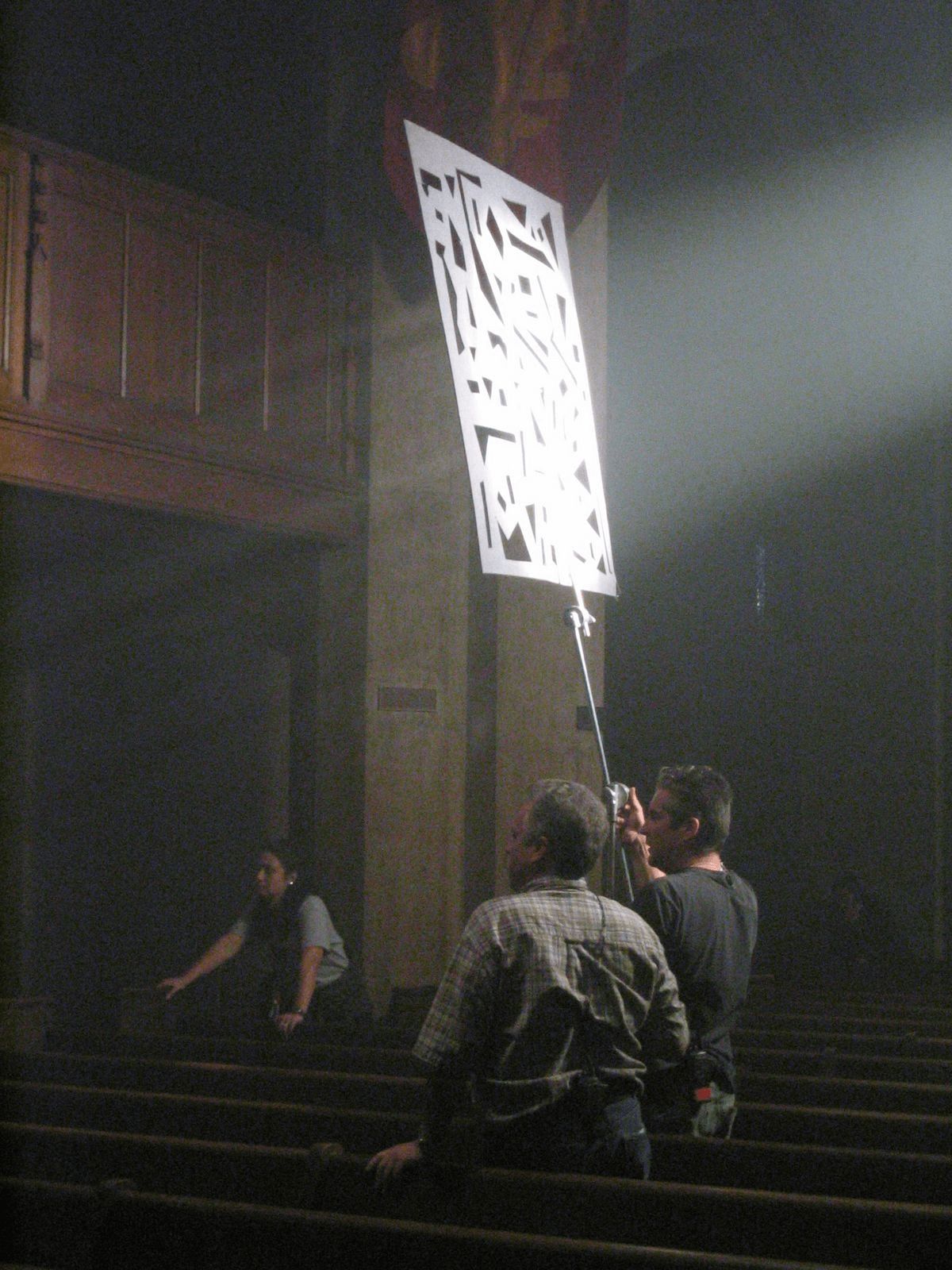
Volumetric Lighting with a cucoloris or “cookie”
Hopefully these tips give you some insight on how to create your own volumetric lighting setup. Understanding the effects of this lighting and how to do it will give you the tools to create cinematic shots even on smaller budgets.
Keep an eye out for how some of your favorite filmmakers and cinematographers use volumetric lighting in their work. This will also give you more insight on how and when to use volumetric lighting in your own projects.
Related Posts
UP NEXT
3-Point Video Lighting Setup Guide
Volumetric lighting is a great lighting technique to add to your arsenal as a cinematographer and filmmaker. One of the most fundamental lighting techniques every filmmaker should know is the 3-point lighting setup. Learn about the components of the 3-point lighting setup and why it is so commonly used to create cinematic images in our next article.
Up Next: 3-Point Lighting →
Showcase your vision with elegant shot lists and storyboards.
Create robust and customizable shot lists. Upload images to make storyboards and slideshows.
